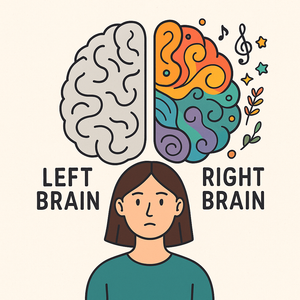Transmission at Synapses
What Is the Transmission of Synapses?
Transmission at synapses refers to the process by which neurons communicate with each other through specialised junctions called synapses. This process is fundamental to neural communication, cognition, and behaviour. It allows electrical signals to be passed between neurons, ensuring coordinated functioning of the nervous system.
Neurons do not physically touch; instead, they rely on chemical and electrical signals to transmit information. This process is known as synaptic transmission, and it plays a crucial role in functions such as movement, perception, memory, and decision-making.
What Are the Steps of Synaptic Transmission?
The process of synaptic transmission involves several key steps:
-
Action Potential Arrives at the Presynaptic Neuron
- An electrical impulse (action potential) travels along the axon of the presynaptic neuron and reaches the axon terminal.
-
Release of Neurotransmitters
- The arrival of the action potential triggers the release of neurotransmitters from synaptic vesicles into the synaptic cleft (the small gap between neurons).
-
Neurotransmitter Diffusion
- Neurotransmitters diffuse across the synaptic cleft and bind to specific receptors on the postsynaptic neuron’s membrane.
-
Activation of the Postsynaptic Neuron
- The binding of neurotransmitters to receptors causes excitatory or inhibitory effects, influencing whether the postsynaptic neuron will generate its own action potential.
-
Neurotransmitter Removal
- To reset the synapse, neurotransmitters are either:
- Reabsorbed (reuptake) into the presynaptic neuron.
- Broken down by enzymes.
- Drift away from the synapse.
- To reset the synapse, neurotransmitters are either:
Why Does Neural Transmission Only Work in One Direction?
Neural transmission is unidirectional because:
- Neurotransmitter vesicles are only found in the presynaptic neuron.
- Receptors are located exclusively on the postsynaptic neuron.
- Neurotransmitters diffuse across the synaptic cleft in a single direction.
These factors ensure that signals do not flow backward, preventing confusion in neural communication.
Excitation and Inhibition in Synaptic Transmission
Neurotransmitters can have two main effects:
Excitation (EPSPs - Excitatory Postsynaptic Potentials)
- Some neurotransmitters, such as glutamate, cause the postsynaptic neuron to be more likely to fire.
- This depolarizes the neuron, increasing the chance of an action potential.
Inhibition (IPSPs - Inhibitory Postsynaptic Potentials)
- Other neurotransmitters, such as GABA, make the postsynaptic neuron less likely to fire.
- This hyperpolarizes the neuron, reducing the chance of an action potential.
The balance of excitation and inhibition is vital for normal brain function, affecting everything from movement to mood regulation.
Real-World Example: How Do Drugs Affect Synaptic Transmission?
Example: Zapurpain and Inhibition
Zapurpain is a drug that acts like an inhibitory neurotransmitter. It works by:
- Mimicking the effect of inhibitory neurotransmitters, reducing overall neural activity.
- Hyperpolarizing the postsynaptic membrane, making it less likely to fire.
- Reducing the perception of pain by lowering activity in pain-related neural pathways.
This is how many painkillers, anti-anxiety medications, and antidepressants work—by modifying synaptic transmission.
Exam Questions and Model Answers
1. Explain the Process of Synaptic Transmission (4 Marks)
✅ AO1 (4 Marks):
- An electrical impulse (action potential) arrives at the presynaptic terminal.
- This triggers the release of neurotransmitters from synaptic vesicles into the synaptic cleft.
- The neurotransmitters diffuse across the synapse and bind to receptors on the postsynaptic membrane.
- This can cause either excitation or inhibition, affecting whether the postsynaptic neuron fires.
2. Explain Why Neurons Can Only Transmit Information in One Direction (3 Marks)
✅ AO1 (3 Marks):
- The presynaptic neuron contains neurotransmitter vesicles, which the postsynaptic neuron does not have.
- The receptors for neurotransmitters are only found on the postsynaptic neuron.
- Neurotransmitters only diffuse from high to low concentration, meaning they cannot travel backward.
3. Describe How Zapurpain Affects Synaptic Transmission Through Inhibition (4 Marks)
✅ AO2 (4 Marks):
- Zapurpain acts like an inhibitory neurotransmitter by binding to postsynaptic receptors.
- This causes hyperpolarization, making the neuron less likely to fire.
- If the inhibitory effect is stronger than excitatory inputs, the neuron will not reach the threshold for an action potential.
- This results in reduced neural activity, decreasing the perception of pain.
4. Briefly Outline How Excitation and Inhibition Are Involved in Synaptic Transmission (4 Marks)
✅ AO1 (4 Marks):
- Excitation occurs when excitatory neurotransmitters (e.g., glutamate) increase the likelihood of firing.
- Inhibition occurs when inhibitory neurotransmitters (e.g., GABA) decrease the likelihood of firing.
- The summation of excitatory and inhibitory signals determines whether the postsynaptic neuron fires.
- This process is essential for normal brain function, affecting memory, movement, and behaviour.
Conclusion
Synaptic transmission is fundamental to psychology and neuroscience, as it allows neurons to communicate and regulate behaviour. Understanding how excitatory and inhibitory neurotransmitters interact helps explain conditions like depression, anxiety, and schizophrenia, as well as the mechanisms behind drugs, learning, and memory.
By mastering synaptic transmission, AQA A-Level Psychology students can confidently answer exam questions and apply knowledge to real-world psychology.

